On this pageBooks about SnipeThe books are listed in order of publication date with the most recent at the top.
Other wader pages
Wider ranging books about waders are listed on:
Books about waders
Snipe
Family: Scolopacidae
In the UK
Genus: Gallinago
Common Snipe
Gallinago gallinago
Genus: Lymnocryptes
Jack Snipe
Lymnocryptes minimus
Occasional UK visitor
Genus: Gallinago
Wilson's Snipe
Gallinago delicata
Other Snipe species
Genus: Gallinago
Solitary Snipe
Gallinago solitaria
Latham's Snipe
Gallinago hardwickii
Wood Snipe
Gallinago nemoricola
Pin-tailed Snipe
Gallinago stenura
Swinhoe's Snipe
Gallinago megala
African Snipe
Gallinago nigripennis
Madagascar Snipe
Gallinago macrodactyla
Great Snipe
Gallinago media
South American Snipe
Gallinago paraguaiae
Puna Snipe
Gallinago andina
Noble Snipe
Gallinago nobilis
Giant Snipe
Gallinago undulata
Fuegian Snipe
Gallinago stricklandii
Andean Snipe
Gallinago jamesoni
Imperial Snipe
Gallinago imperialis
Genus: Coenocorypha
Chatham Snipe
Coenocorypha pusilla
Subantarctic Snipe
Coenocorypha aucklandica
Snares Snipe
Coenocorypha Huegeli
A number of species of the genus Coenocorypha have recently become extinct.
|
|
|
|
Terrestrial Gamebirds & Snipes of Africa: Guineafowls, Francolins, Spurfowls, Quails, Sandgrouse & Snipes
Rob Little
Jacana
2016
"Terrestrial Gamebirds & Snipes of Africa is a detailed full-colour hand book. It includes everything needed to identify and get to know the 74 species that fall into six groups: guineafowls and Congo Peafowl, francolins and partridges, spurfowls, quails, sandgrouse, and snipes and Eurasian Woodcock. Terrestrial Gamebirds & Snipes of Africa offers a concise summary of the large but scattered body of accumulated scientific research and field-guide literature. Pertinent and interesting facts about the distribution, habits, breeding and conservation of each species are presented in a readable fashion. More than 250 photographs convey the appearance, characteristic features, behavioural activities and, in many cases, the habitats frequented by each bird. Terrestrial Gamebirds & Snipes of Africa will be a worthy addition to the ornithological literature and to the bookshelves of bird enthusiasts, particularly birders, wing-shooters, land owners and anyone with an interest in nature and conservation, throughout Africa and across the rest of the world."
|
Buy from amazon.co.uk 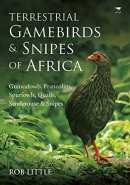
|
|
Seventh European Woodcock and Snipe WorkshopProceedings of an International Symposium of the IUCN/Wetlands International Woodcock & Snipe Specialist GroupEditor: Y. Ferrand
Office national de la chasse et de la faune sauvage
2013
An 92 page collection of papers originally presented at the workshop in St Petersburg in May 2011.
|
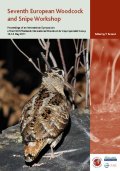 |
|
The Jack SnipeGuy-Noel Olivier
Oiseaux Migrateurs du Palearctique Occidental
2008
"This monograph brings together the current knowledge on the biology, ethology, phenology, ecology of the species within its distribution range. It is focussed on a unique knowledge on the management of the birds' habitat, specifying its ecological "niche" and identifying factors necessary for its occurrence in numbers. A set of concrete proposals on measures to be taken are anticipated, among which the reform of the taxation on wetlands is the most important. Studies resources as needed to greater knowledge of the species are listed. Studies of the species age-ratio, harvest estimates and ringing data, permit to evaluate it its actual conservation status."
|
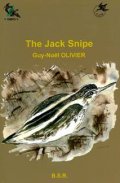 |
|
Sixth European Woodcock and Snipe Workshop 25-27 November 2003, Nantes, France: Proceedings of an International Symposium of the WI Woodcock and Snipe Specialist GroupEditor: Y Ferrand
Wetlands International
2006
This volume contains 16 papers covering topics such as breeding biology, ecology, behaviour, population dynamics, monitoring and hunting bags. The papers focus on Woodcock (Scolopax rusticola) Common Snipe (Gallinago gallinago), Great Snipe (Gallinago media), Jack Snipe (Lymnocryptes minimus) and African Snipe (Gallinago nigripennis). A general paper describes the conservation status of the world's Woodcocks and Snipes.
|
Buy from amazon.co.uk 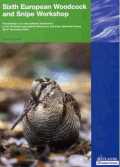
|
|
Monitoring Methods for Non-Breeding SnipeSarah F. Jackson
BTO Report 355
British Trust For Ornithology
2004
"Accepting the requirement for accurate information regarding the status of Common and Jack Snipe populations in Great Britain, and the problems associated with conventional survey methods for secretive, largely nocturnal or crepuscular, rarely aggregating species with a preference for little observed habitat, this report presents and discusses a range of alternative survey methodologies taken from the literature. Survey methods discussed are: simple transects, nets and ringing, nocturnal surveys, calls and playback. Each alternative approach is discussed in relation to likely effectiveness and feasibility in relation to: time constraints, habitat characteristics, locating the birds and welfare issues."
|
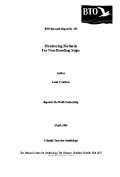 |
|
International Single Species Action Plan for the Conservation of the Great Snipe Gallinago media
Technical Series No. 5
AEWA
2004
Prepared with financial support from the Ministry of Agriculture, Nature Management and Fisheries, The Netherlands
From the summary: "At present the Great Snipe breeds in two separate areas: a western population in the Scandinavian Mountains and an eastern population from Poland throughout the Baltic States, Ukraine, Belarus and the boreal areas and bush-tundra areas in Russia eastwards to the Yenisey River in Siberia. It winters, with several stopover sites, in tropical Africa and seems to have a rapid spring and autumn migration with a few short stopovers between African wintering areas and the breeding sites. The population declined dramatically at the end of the 19th and in the first half of the 20th century, when the species disappeared from the Netherlands, Germany, Denmark, Finland and the lowlands of Sweden and Norway. During the same period there was also a considerable population reduction in Poland, the Baltic States, Ukraine, Belarus and in Russia (best documented for the southern parts)."
|
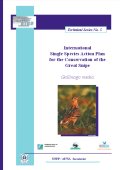 |
|
Snipes of the Eastern Baltic Region and BelarusEditors: S. Svazas, E. Mongin, G. Grishanov, A. Kuresoo and W. Meissner
Oiseaux Migrateurs du Palearctique Occidental
2002
A 95 page report which takes stock of the huge research effort undertaken in Estonia, Belarus, Kaliningrad, Poland and Lithuania, stimulated by a OMPO program aimed at improving knowledge of the 3 species which breed in Europe and conserving their habitats..
|
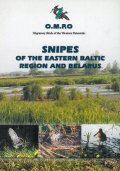 |
|
SnipesEditor: R Rouxel
?
2000
A 300 page book that summarises the available literature on the biology and demography of the 3 snipe species (Common Snipe, Great Snipe, and Jack Snipe) and the management techniques for their habitats.
|
 |
|
Fifth European Woodcock and Snipe Workshop: Proceedings of an International Symposium of the Woodcock and Snipe Specialist Group 3-5Editor: H Kalchreuter
Wetlands International
2000
An 84 page collection of papers.
|
Buy from amazon.co.uk 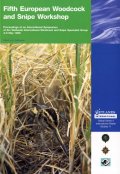
|
|
The Common Snipe: Elements of an Action PlanMichel Devort
Oiseaux Migrateurs du Palearctique Occidental
1997
This 99 page report presents data which could form the basis of an action plan for a species included in the priority list at the European level.
|
 |
|
Fourth European Woodcock and Snipe Workshop: Proceedings of an International Symposium of the IWRB Woodcock and Snipe Research Group, Saarbrucken, 1992Editor: H. Kalchreuter
Wetlands International
1994
An 114 page collection of 17 papers.
|
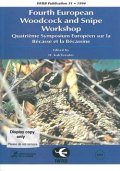 |
|
The Hunting Of Snipe And Woodcock In Europe: A Ringing Recovery AnalysisI.G. Henderson, W.J. Peach & S.R. Baillie
Research report 115
British Trust for Ornithology
1993
57 page report.
|
 |
|
Plovers, Sandpipers and Snipes of the WorldPaul A. Johnsgard
University of Nebraska Press
1981
A guide to 165 species of waders with identification keys, comparative biology, and species accounts. Includes 60 colour plates and 135 distribution maps.
|
Buy from amazon.co.uk 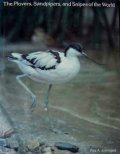
|
|
The Snipes: A Study Of The Genus CapellaLeslie M. Tuck
Monograph Series Number 5
Canadian Wildlife Series
1972
|
Buy from amazon.co.uk 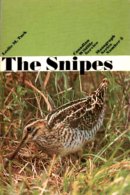
|
|
Bird Study, Volume 3, Issue 21956
Main articles:
- The Theory of Line Transects - W. B. Yapp
- Fluctuations of Common Snipe, Jack Snipe and Golden Plover in Tiree, Argyllshire - J. Morton Boyd
- Mortality and Egg Production of the Meadow Pipit with Special Reference to Altitude - J. C. Coulson
|
 |
|
A Bird Watcher's Note Book: Studies Of Woodcock, Snipe And Other BirdsPhilip Rickman
Philip Allan & Co
1930
A reprint was published by Read Books in 2010.
|
Buy 2010 reprint from amazon.co.uk 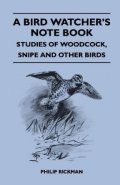
|
|
The Book Of The Snipe'Scolopax'
William Blackwood & Sons, Edinburgh
1904
From the preface: "This little book is not intended as an exhaustive book of instruction either scientific or sporting. It is merely a reprint, with additions, of sundry papers jotted down in the rare idle hours of a busy life. These papers having, I am told, amused many in the pages of 'Maga,' may perhaps amuse more when collected in booklet form. If they should do for the reader the kindness which they performed for the writer - namely, that of bringing a whiff from the snipe-haunted marshes into the stuffy prison of everyday life in parlour and street - Scolopax will feel that he has at any rate done some one a good turn, and nobody any harm."
|
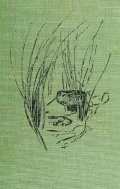
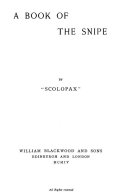 |
|
Snipe And WoodcockL.H. De Visme Shaw
Illustrations: Archibald Thorburn and Charles Whymper
Fur, Feather & Fin Series
Longmans, Green & Co
1903
Contents:
- Natural History Of The Snipe
- Shooting The Snipe
- Natural History Of The Woodcock
- Shooting The Woodcock
- Snipe And Woodcock In Ireland
- Cookery Of The Snipe And Woodcock
|
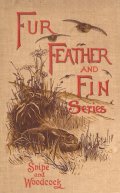
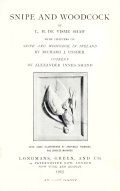 |
|
The Geographical Distribution Of The Family Charadriidae, Or The Plovers, Sandpipers, Snipes, And Their Allies
Henry Seebohm
Illustrations: J.G. Keulemans and possibly others
Henry Southeran & Co
1888
From the preface: "About twenty years ago Mr. J. E. Harting began to collect information relating to the group of birds commonly called the Limicolae, with the intention of publishing a monograph of them. In the course of his studies he contributed from time to time articles on this group of birds to 'The Ibis' and to the 'Proceedings' of the Zoological Society; but subsequently his attention drifted into other channels, until in 1884 he abandoned the idea of writing a monograph, and offered his collection of birds for sale. I was then writing on the British species belonging to the group, which had always been an especial favourite of mine, and was glad of the opportunity of making my collection more complete. I therefore bought the Harting collection, which, with the Swinhoe collection, already in my Museum, and the Shelley collection of African Limicolae since acquired, provided me with ample material for study as soon as the last part of the 'History of British Birds' had gone to press. The result of this study is the present volume. Acting in accordance with the old proverb "bis dat qui cito dat," I determined not to write a monograph. What I had to say on the habits of these birds I had already said in the work referred to: on the other hand, I found that the study of all the species contained in the group threw quite a different light upon their geographical distribution, and enabled me to correct what appeared to be errors in their classification - their mutual relationship, in fact; so I determined to make these two subjects the theme of the book."
|
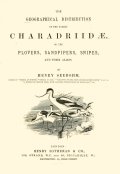
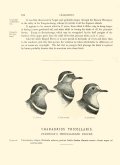
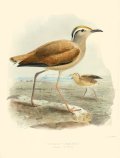 |
|